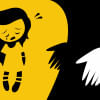Recognising possible signs of abuse in pre-schoolers

In the tender years of early childhood, communication takes on many forms. For pre-schoolers, who are just starting to discover the complexities of their emotions and interactions, recognising something critical as signs of abuse can be challenging. It is our responsibility to be observant to the subtle cues that may hint at their hidden suffering. By understanding these indicators and taking timely action, we can provide them the safe, nurturing environments these kids deserve, ensuring their journey into the world is marked by love, trust, and security.
Here are important details that serve as red flags and must not be disregarded by parents or caregivers.
Signs of abuse
Terri Chen, head of the psychology team under NUH Singapore's department of psychological medicine, says abused children may be more emotionally reactive to usual situations in the form of whining, crying or shouting.
They may also be more withdrawn or easily startled when touched unexpectedly.
These signs can be broadly grouped into the following four categories:
Behaviours
Difficulties sleeping, changes in appetite, startle reflex, new fears, increased irritability or separation anxiety, regression or re-enactment of the event during play time.
Physical symptoms
Complaints of stomach aches and headaches, as well as increased heart rate or sweating.
Feelings
Children may seem fearful or more irritable, or be distressed when reminded of the event.
Thoughts
They may avoid thinking about the event altogether, have nightmares or difficulty concentrating.
List of action for parents to do in case of detection of abuse
- Pay attention to unexplainable bruises or marks on the child.
- For children who are able to speak, it is helpful to ask them about events chronologically, like if something happened after breakfast or nap time.
- Ask open-ended questions to allow the child to relay what happened in their own words, but avoid questioning them repeatedly.
- In the aftermath of abuse, the most important thing children need is safe attachment, which requires their parents to be present and show concern towards them. This includes validating their feelings before offering reassurance, and helping them make sense of feelings by labelling their emotions.
- Creating safe spaces for children to process what they observed, and help them learn certain coping strategies like deep breathing. Let them hold a safe object that soothes them, like a stuffed toy.
- Maintain or re-establish daily routines for the child as that creates safety, security, and predictability, along with ensuring he or she gets good sleep and rest so that the child can better regulate his or her emotions.
Preventing abuse
Check in with children about what goes on at school through role play, drawing, or storytelling. This also helps the parents detect any sudden changes in the mood or behaviour of their kids.
Parents can also start discussions early about how to recognise abuse and what to do, using age-appropriate language and examples. They can teach their children to identify warning signs, like threats, use of physical force, and inappropriate touching.
Younger children may learn better through stories, songs and pictures, while older kids can learn from role-playing.
Parents should consistently act in a way that makes children feel confident that their parents will listen to, believe in, and help them.
Copyright: The Straits Times/Asia News Network

 For all latest news, follow The Daily Star's Google News channel.
For all latest news, follow The Daily Star's Google News channel. 








Comments